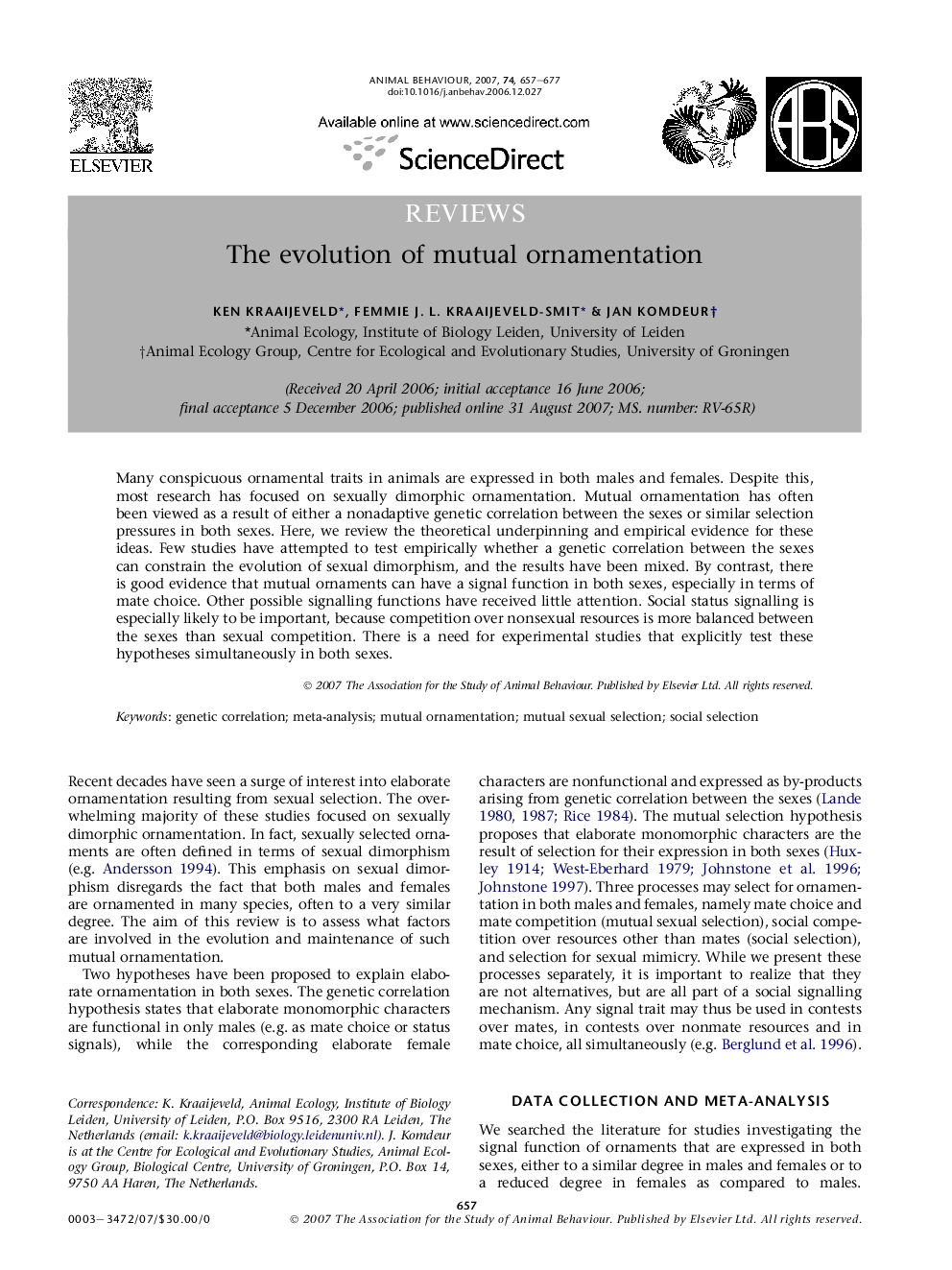| Article ID | Journal | Published Year | Pages | File Type |
|---|---|---|---|---|
| 2418211 | Animal Behaviour | 2007 | 21 Pages |
Many conspicuous ornamental traits in animals are expressed in both males and females. Despite this, most research has focused on sexually dimorphic ornamentation. Mutual ornamentation has often been viewed as a result of either a nonadaptive genetic correlation between the sexes or similar selection pressures in both sexes. Here, we review the theoretical underpinning and empirical evidence for these ideas. Few studies have attempted to test empirically whether a genetic correlation between the sexes can constrain the evolution of sexual dimorphism, and the results have been mixed. By contrast, there is good evidence that mutual ornaments can have a signal function in both sexes, especially in terms of mate choice. Other possible signalling functions have received little attention. Social status signalling is especially likely to be important, because competition over nonsexual resources is more balanced between the sexes than sexual competition. There is a need for experimental studies that explicitly test these hypotheses simultaneously in both sexes.
